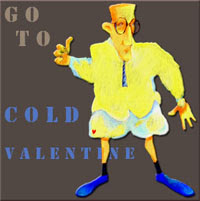F9F Panther
Grumman
F9F Panther
Although the F9F Panther and F-86 Sabre were developed at the same time they were a generation apart because of the reality of landing a jet on a carrier designed to handle prop planes. The straight wing Panther was no competition for the MiG 15 and was limited mostly to ground support during the Korean War. It proved both rugged and reliable as the Navy's first real carrier jet.
F9F-2B
Crew: 1
Power: 1 - Pratt & Whitney 2586 kg / 5700 lb thrust J42-P-8 turbojet engine
(license built Rolls-Royce Nene)
(license built Rolls-Royce Nene)
Max. Speed: 877 kph / 545 mph
Ceiling: 13,600 m / 44,600 ft
Range: 2177 km / 1353 miles
Climb: 1567 m / 5140 ft per minute
Weight -
Empty: 4533 kg / 9993 lb
Max. Take Off: 8842 kg / 19,494 lb
Size -
Wingspan: 11.58 m / 37 ft 11.75 in
Wing Area: 23.22 sq m / 250 sq ft
Length: 11.35 m / 37 ft 3 in
Height: 3.45 m / 11 ft 4 in
Armament:
4 - 20 mm / 0.78 in cannon
908 kg / 2000 lb underwing weapon load
V I D E O
Formation
The first years of carrier jet aviation came shortly after the end of World War II when experienced personnel were returning to civilian life and money for defense was drastically curtailed. The war in Korea reversed this dynamic as conventional warfare again became a reality in a time of nuclear deterrence. The atom bomb did not prevent North Korea's invasion of the south nor did it intimidate China when they confronted American forces on the Korean peninsula. An era of wars with limited objectives became the new reality. To Washington policymakers the wars in Korea and Vietnam were not just about blunting the spread of Communism but it also had to do with maintaining credibility. Was the U.S. actually willing to defend Western Europe despite the threat of nuclear war? America's strategic nuclear force was of little threat if the nation's leaders didn't indicate by their actions a willingness to use them.
Launch
Jet aircraft require far more fuel than their propeller predecessors yet they flew from World War II carriers without provision to make up the difference. This was to be a constraint on flight operations during the course of the Korean War.
World War II era Oriskany
In just over two months American and UN troops had been pushed back from the Yalu River along the border with China all the way to the 38th Parallel near the South Korean capital of Seoul. Air supremacy over the battlefield was an important factor in bringing the advance of Chinese troops to a halt. Although the F9F was obsolete in its intended role as a fighter it did prove to be rugged and effective in ground support.
Preparing for Flight
Once the F9F is brought to the flight deck it is launched as quickly as possible. Every minute its jets burn prior to launch reduces its range by 5 kilometers or about 2.5 miles. Catapults were new at the time and limited in capability. Unfavorably still wind could mean reducing ordnance until the appropriate launch weight was met. The hardware was new and new also to the personnel using them. It was on the job training, the school of hard knocks. Yet, it went remarkably well. This photo was taken in 1950 aboard CVB-42, Franklin D. Roosevelt.
Wing Tip Fuel Tanks
Angling the wings 35 degrees on the upgraded F9F Cougar added another 160 kilometers or 100 miles an hour to its speed. Although the Cougar benefited from an improved engine none of the F9Fs were ever equipped with afterburners.
Korean War Pilot
A few short years after the end of World War II a number of pilots found themselves once again climbing into the cockpit. While P-51 Mustangs, F4U Corsairs and Skyraiders were still in use it was quickly apparent that Korea marked the beginning of the age of jets. Now you were flying at twice the speed and given half the time to make life or death decisions. This is a photo of Marine ace Philip DeLong.
Providing Fleet Defense
A carrier is not an airport. It's short, rapid take offs and abrupt landings. The aircraft need to be of lightweight materials yet remain structurally strong to withstand the stress of carrier operations. They need power for speed and plenty of fuel for the ranges required when operating at sea. The design of a carrier jet is the result of finely balanced engineering trade-offs. It is rare to find a plane that meets the expectations of both the Air Force and the Navy.
Ground Support in Korea
The extended nose on this aircraft and window on the side of the fuselage shows this F9F has been modified for photo-reconnaissance. Close to 1400 Panthers were built and by 1958 they had all been retired. The early days of jets was like the early days of any emerging technology. By the time they were released into active service they were already obsolete when measured against the new aircraft in testing.
Related Topics:
F4U Corsair
F7U Cutlass
F-80 Shooting Star
F-84 Thunderjet
F4U Corsair
F7U Cutlass
F-80 Shooting Star
F-84 Thunderjet
OVER EASY













No comments:
Post a Comment